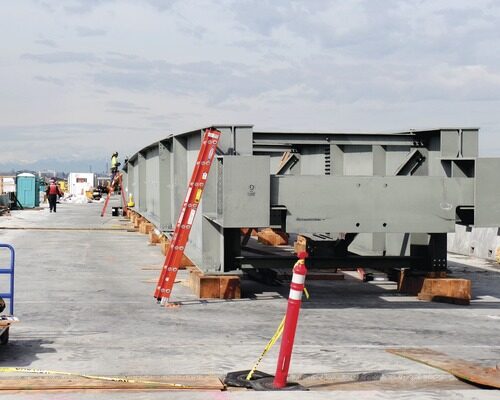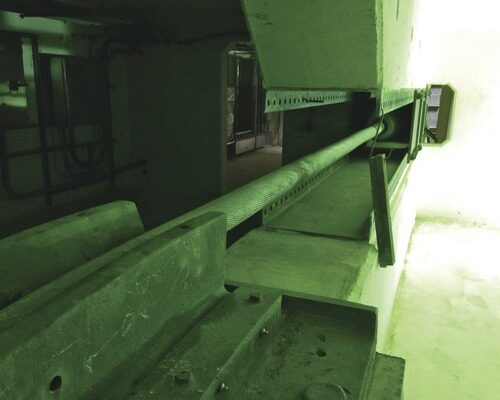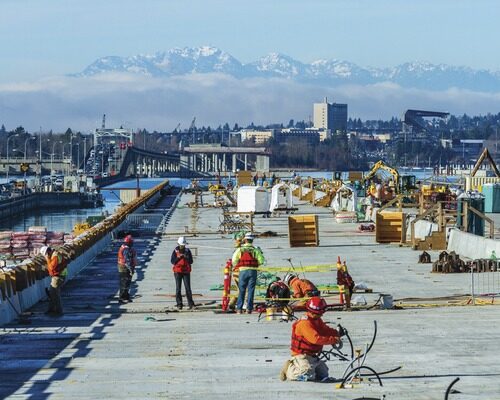To overcome weather and maintenance issues, the design team raised the new bridge 20 ft off the pontoons, allowing complete access to all bridge systems from below.
"We will be able to do 95% to 99% of the work on this structure from underneath," says Becher.
To help with maintenance, crews also built a complete facility, housed under the east approach of the bridge, into the hillside with direct access to both Lake Washington via a dock and the pontoons. The facility contains the command station for all bridge systems.
Concrete pontoon and anchors
The new bridge includes 77 total pontoons, 23 that make up the spine—21 longitudinal pontoons and two cross pontoons—and 54 flanker pontoons, smaller supplemental pontoons designed for stability and attached to the sides of the spine for extra buoyancy.
Each of the larger pontoons for a bridge 116 ft wide is 360 ft wide and weighs 11,100 tons. The design called for specialized high-strength marine concrete mixes with 7,500 psi.
Initial pontoons proved faulty, requiring on-the-lake fixes for the first wave, a plan that required more steel reinforcement.
Once on the lake, though, the pontoons needed a bridge deck. KGM brought in a 24-barge derrick crane, the largest that would fit through the locks, to transition the cast-in-place concrete deck and steel girders, with pieces weighing 100 tons, all the way across the width of the bridge. Access to the new bridge comes from the north only.
"The pontoons were designed to maximize what could get through the locks; the barge was limited by the size of the locks," says Becher. "You always have that limiting factor. It limits what you can build and the equipment you can use."
To hold the pontoons in place, KGM used a concrete-mixing site it created on the north end of the lake in Kenmore, Wash., to build anchors. The gravity anchors, the size of a two-story house, are basically giant hollow concrete boxes measuring 40 ft by 40 ft by 23 ft. The derrick picked them off a barge and helped sink them into the lake.




Post a comment to this article
Report Abusive Comment